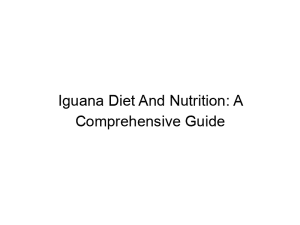Leopard geckos are popular pets known for their docile nature and beautiful patterns. However, like any pet, they can fall prey to various health problems. Understanding how to identify and treat these issues is crucial for ensuring your gecko’s wellbeing. This comprehensive guide will help you recognize common illnesses, understand their causes, and learn effective treatment strategies. You’ll learn how to spot symptoms, implement preventative measures, and when professional veterinary care is necessary. Let’s dive into How to Identify and Treat Common Health Problems in Leopard Geckos.
Leopard geckos have a relatively fragile skeletal system. Fractures can occur from falls or rough handling. Proper handling techniques are essential to prevent injuries.
Their digestive system is adapted to a diet of insects. Problems often arise from improper feeding, including impaction (blockage) and
metabolic bone disease (MBD).
Respiratory System:
Respiratory infections are common, often manifesting as wheezing, gasping, or open-mouth breathing. Maintaining proper humidity and temperature is vital for respiratory health.
Immune System:
A weakened immune system increases susceptibility to various diseases. Proper nutrition, hygiene, and a stress-free environment are crucial for a strong immune system.
Common Leopard Gecko Health Problems
Metabolic Bone Disease (MBD):
MBD is a severe condition caused by calcium and vitamin D3 deficiencies. Symptoms include soft bones, skeletal deformities, and lethargy. Treatment involves dietary changes, supplements, and UV-B lighting.
Impaction:
Impaction occurs when undigested food or substrate becomes lodged in the digestive tract. Symptoms include lethargy, lack of appetite, and swelling in the abdomen. Treatment may involve enemas or surgery in severe cases.
Respiratory Infections:
Bacterial or viral infections can affect the respiratory system. Symptoms include wheezing, gasping, and nasal discharge. Treatment typically involves antibiotics or supportive care, depending on the cause.
Parasites:
Internal and external parasites can infest leopard geckos. Symptoms vary depending on the type of parasite. Treatment involves deworming medications or topical treatments.
Eye Problems:
Eye infections, injuries, and prolapse can occur. Symptoms include swelling, redness, discharge, and cloudy eyes. Treatment depends on the specific cause.
Recognizing Early Warning Signs
Changes in Behavior:
Lethargy, loss of appetite, and hiding are common early signs of illness. Any significant change in behavior warrants close observation.
Physical Symptoms:
Examine your gecko regularly for any unusual lumps, bumps, skin discoloration, or changes in shedding patterns.
Shedding Issues:
Difficulty shedding can indicate dehydration, metabolic bone disease, or other underlying conditions. Proper humidity is essential for healthy shedding.
Appetite Changes:
Sudden loss of appetite or refusal to eat can be an indicator of illness or stress. Monitor food intake closely.
Maintaining a Healthy Environment
Proper Temperature and Humidity:
Maintaining appropriate temperature gradients (hot and cool zones) and humidity levels is critical for overall health. Use accurate thermometers and hygrometers.
Substrate Selection:
Select a suitable substrate that is safe for your gecko. Avoid substrates that can cause impaction, such as sand or small particles.
UV-B Lighting:
Providing UVB lighting is crucial for calcium absorption and preventing MBD. Ensure the lamp is the correct type and strength.
Cleanliness and Hygiene:
Regular cleaning of the enclosure is essential to prevent bacterial and parasitic infections. Maintain proper hygiene when handling your gecko.
Dietary Considerations
Insects as the Primary Food Source:
Leopard geckos are insectivores, requiring a diet consisting of appropriately sized insects. Gut-loading insects with nutritious foods is crucial.
Calcium and Vitamin D3 Supplementation:
Supplementing insects with calcium and vitamin D3 is necessary to prevent MBD. Use a quality reptile calcium and vitamin D3 powder.
Variety in Diet:
Offer a variety of insects to ensure a balanced diet. Avoid feeding only one type of insect.
Feeding Schedule:
Feed your gecko appropriately sized insects according to its age and size.
When to Seek Veterinary Care
Severe Symptoms:
Seek immediate veterinary care if your gecko exhibits severe symptoms such as lethargy, labored breathing, or significant weight loss.
Unresponsive to Treatment:
If home treatments are not effective, seek veterinary attention to receive a proper diagnosis and treatment.
Suspected Fractures:
Any suspected fracture requires immediate veterinary intervention to prevent further complications.
Suspicion of Serious Illness:
When in doubt, consult a reptile veterinarian. Early diagnosis and treatment often lead to better outcomes.
Preventative Care
Regular Health Checks:
Regularly inspect your gecko for any signs of illness. Early detection significantly improves treatment success.
Quarantine New Geckos:
Always quarantine new geckos for several weeks before introducing them to other geckos to prevent disease transmission.
Stress Reduction:
Minimize stress by providing a comfortable and secure environment. Avoid excessive handling or disturbance.
Proper Handling:
Learn proper handling techniques to prevent injury to your gecko.
Common Medications and Treatments
Antibiotics:
Antibiotics are used to treat bacterial infections. Always consult a veterinarian before administering any medication.
Deworming Medications:
Various deworming medications are available to treat internal parasites. A veterinarian can determine the appropriate medication and dosage.
Calcium and Vitamin D3 Supplements:
These supplements are essential for preventing and treating MBD.
Electrolyte Solutions:
Electrolyte solutions can help replenish fluids lost due to dehydration.
Understanding Laboratory Diagnostics
Fecal Exams:
Fecal exams help identify internal parasites.
Blood Work:
Blood work can provide information about overall health, including electrolyte levels and organ function.
Radiographs (X-rays):
Radiographs can help detect bone fractures, impaction, or other internal abnormalities.
Specific Treatment Protocols
Treating MBD:
MBD requires a multifaceted approach, including dietary changes, UVB lighting, and calcium/vitamin D3 supplementation.
Treating Impaction:
Mild impaction might be managed with fluids and supportive care, while severe cases may necessitate surgery.
Treating Respiratory Infections:
Treatment depends on the cause, ranging from supportive care to antibiotics.
Creating a Healthy and Stimulating Environment
Enrichment:
Provide environmental enrichment to keep your gecko active and mentally stimulated. This can include hides, climbing structures, and appropriate substrate.
Social Interaction:
While leopard geckos are generally solitary, appropriate social interaction can contribute to overall well-being.
Stress Management:
Minimize stress by providing a stable environment and avoiding unnecessary handling.
Frequently Asked Questions
What are the most common signs of illness in leopard geckos?
Common signs include lethargy, loss of appetite, changes in shedding, respiratory issues, and unusual skin conditions.
How often should I check my gecko’s health?
Regularly inspect your gecko for any abnormalities. Daily observation is ideal, but at least a weekly visual check is recommended.
What is the best way to handle a leopard gecko?
Support the gecko’s body gently, avoiding squeezing or dropping.
What should I do if I suspect my gecko is ill?
Observe your gecko closely, documenting symptoms. Consult a reptile veterinarian immediately if the symptoms are severe or don’t improve.
What are the typical costs associated with treating a sick leopard gecko?
Costs vary greatly depending on the illness, diagnostic tests needed, and treatment required. Expect to spend hundreds of dollars for serious conditions.
How can I prevent metabolic bone disease (MBD)?
Ensure proper UVB lighting, a balanced diet with calcium and vitamin D3 supplementation, and appropriate humidity levels.
What types of parasites can affect leopard geckos?
Internal parasites (like coccidians and nematodes) and external parasites (like mites) can both affect leopard geckos.
Final Thoughts
Responsible leopard gecko ownership involves proactive health management. By understanding common health problems, implementing preventative measures, and seeking veterinary care when necessary, you can ensure your gecko thrives for many years. This comprehensive guide provides a strong foundation for identifying and addressing potential health concerns. Remember that early detection and prompt veterinary intervention significantly improve the chances of a successful recovery. Regularly monitor your gecko’s behavior and physical condition, maintain a clean and appropriate habitat, and provide a balanced diet. Investing in your gecko’s health ensures a rewarding and long-lasting companionship. Don’t hesitate to reach out to a reptile veterinarian if you have any concerns; early intervention is key!




